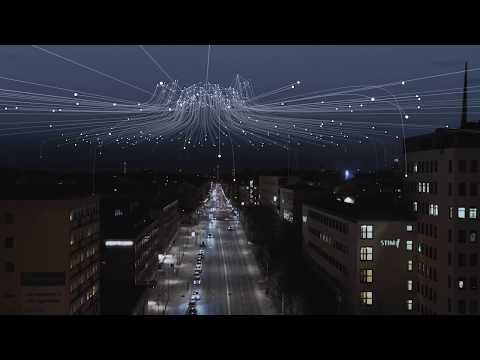The Device Chronicle interviews Tero Hottinen, Head of Strategic IoT Partnerships, KONE, on how using digitalization to evolve its fleet of elevators and escalators, as well as develop smart building solutions.
Tero is the Head of Strategic IoT Partnerships at KONE. Tero has a strong track record in industrial digital strategy development for global corporations based in Finland. He spent the first 10 years of his professional career focusing on strategic development in the equipment-driven industry and the last 10 years with a major emphasis on digital service development aspects of industrial equipment and driving industrial partnership business. This has involved developing new digital services and leading the go to market planning for them. Tero has significant experience in digital strategy setting, performing Mergers & Acquisitions, business mentoring and start-up operational management and investments. His experience runs across the spectrum. In his current role, Tero is looking to identify partners with whom Kone can work with to move the needle from a business perspective. He says this involves “Focusing on the backbone of the technology and also trying to tap into customer problems to build the right business facing solutions. Day to day, this involves combining the skills of the technical teams with insights from customers and the market and focusing on solving the customer’s problems together.”

KONE product development focus
KONE as a company is in the elevator and escalator business. Tero says the company is trying to shift some of the focus from what happens in “the elevator shaft” to trying to understand what is actually happening in the wider environment around the elevator i.e. in the building and networks of buildings and public spaces, and how they can impact that together with other partners in the way that is the whole process for customers. Tero says it is a case of delivering more sustainable buildings and cities helping to reduce carbon footprint. It is not only what happens within a building but also between the buildings within campuses and the trust in these physical infrastructure networks covering public transportation node points such as metro stations, train stations, airports and the like. Assets and equipment in smart cities use cases are an important strategic consideration as app development and provision of real-time data on timetables and similar use cases have taken a lot of attention in the market.
Serving global markets, focusing on local markets
KONE is a global company. This means that the company builds many different types of backbone infrastructures but also focuses on user experience and how best to ensure that the solution complies with local regulations and needs. Tero says that there are also key fundamentals that broadly apply across all markets. “This is the beauty of digitalization in that you can have both local and global. This global focus also helps KONE in scaling solutions so they don’t have to build dedicated solutions for each region.”
Future proofing the technology in KONE equipment
More specifically, the product development focus of KONE includes elevators, escalators, automatic doors. turnstiles, access management, and management of these systems within a building or across networks of buildings. Tero explains that digitalization has transformed the landscape dramatically for product development. “In the end, it is crucial not to end up delivering a commodity product. So whenever a new building is built today, in some cases, the elevators may be expected to last for 40-50 years, avoiding legacy technology is key. The equipment must be future proofed for technology development and enhancement. This also means being able to adapt to whatever might be coming in the future and the change is constant and coming faster and faster. The user experience requirements are also changing rapidly so you need to really be able to be adaptable for that and that digitalization is the answer for that.
Tero further explains that technologies such as computational capabilities and analytics capabilities are deployed on the edge to be able to do real-time analytics as and when they are needed. But at the same time, a pipeline to the cloud must be built, to use its vast computational power to help with the scalability of the solutions. Tero explains that “It is a world of hybrid solutions in which security is paramount and the ability to release new features through the cloud quickly. This is where OTA software updates are so important: You do not want to be limited in what you can deliver by someone with a USB stick. Plugging in a USB key to a gateway in an elevator is really inefficient, and also unsustainable as there are more than 160,000 units of equipment out there in the KONE equipment base.”
An elevator has a typical R&D cycle of a few years to develop so Tero stresses that great care needs to be taken to ensure the avoidance of the creation of software architectures that could be obsolete. He says “KONE must remain flexible and work with best partners to get the best technology – ones that are digitally native and then utilize their expertise and solutions. They are also the ones who can help model and build for whatever the future may hold in store. It is a strategy to be adaptable and to future proof KONE’s presence in a building that will be there for the next 50 years if not far longer. You need to avoid having maintenance or obsolescence management for technology that is no longer available. It is vital to be able to update and upgrade the solutions based on the needs of that particular point in time and again at some point in the future.”
Tero describes how KONE delivered a brilliant intelligent predictive maintenance solution called 24/7 Connected Services. The current installed base using the solution is around 10% of KONE’s fleet or 150,000 units. The 24/7 Connected Services solution monitors what is happening with a piece of equipment, is able to predict what will happen with the piece of equipment and is able to alert maintenance teams if something is not right with the equipment. This solution depends on what Tero describes as “hardcore” analytics and machine learning. “Machine learning models are feeding data from many thousands of items into the same pool, so you have a massive scalable basis to acquire actionable insights.” Tero uses a nice analogy on the power of machine learning and analytics for product and solution development: “With raw data like unrefined oil, there is little you can do with it. It’s the enrichment that leads to the value of action-oriented insights. The data is harvested efficiently with IoT. “You want to leverage machine learning and AI capabilities to actually do something meaningful based on an analysis of the real data. Computer vision also has many use cases enabling increased safety, improved useability and providing insights with historical trends or real time equipment usage rates.”

Partnership with AWS for KONE IoT services
Announced in December 2021, KONE is working with AWS for the whole backbone IoT platform and a large part of the digital platform, digital services and customer facing solutions. Tero explains that IoT capability and OTA software updates are crucial for KONE as they develop software-centered digital products. “Software is needed on the edge to perform real time tasks such as elevator group control as the update must occur in real time synchronously across the elevators on the floor. With group control you may have eight elevators on the same corridor, for example, so that group has to act together. And it really needs to be optimized in order to kind of ensure smooth people flow. And so, those are like the things that just have to happen on the edge.”
Importance of OTA software updates for KONE IoT
OTA software updates are a must these days. Tero explains that transferring connections onto AWS infrastructure has, he reports, been very successful so far. The KONE product team needs to be able to update the features and build up new capabilities over the air.
This speaks to a key point: KONE’s key product design principle is to be as secure as possible and then to build layers on top of that: Tero says “It’s much easier than of course to build your own solutions to be secure on layers having the backbone with AWS which should be inherently secure.” Tero explains “KONE’s product development teams adhere to the standards and best practices and perform constant security reviews penetration testing to try to break their system to ensure the highest level of security and resilience.”
Tero concludes that the really “beautiful” thing about digitalization is that it has “really kind of forced teams to focus on the actual user experience and how they can impact it and from it, derive what we could be doing from knowing that this is technologically possible.”
We wish Tero and his colleagues at KONE well as they build out their digital product development and IoT strategies.
